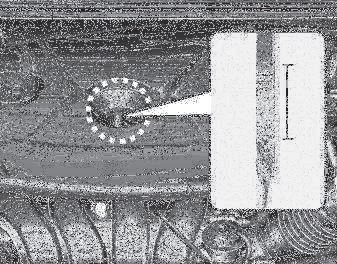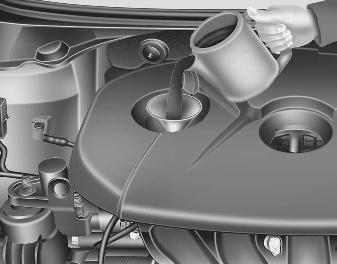
Hyundai Elantra Owners Manual
Hyundai Elantra: Engine oil
Refer to this section for understanding notifications and alerts that appear on your Hyundai ElantraŌĆÖs infotainment or cluster screen.
Checking the engine oil level

1. Be sure the vehicle is on level ground.
2. Start the engine and allow it to reach normal operating temperature.
3. Turn the engine off and wait for a few minutes (about 5 minutes) for the oil to return to the oil pan.
4. Pull the dipstick out, wipe it clean, and re-insert it fully.
![]() WARNING
WARNING
Be very careful not to touch the radiator hose when checking or adding the engine oil as it may be hot enough to burn you.
5. Pull the dipstick out again and check the level. The level should be between F and L.
![]() CAUTION
CAUTION
- Do not overfill with engine oil. Engine damage may result.
- Do not spill engine oil, when adding or changing engine oil. If you drop the engine oil on the engine room, wipe it off immediately.

If it is near or at L, add enough oil to bring the level to F. Do not overfill.
Use a funnel to help prevent oil from being spilled on engine components.
Use only the specified engine oil. (Refer to ŌĆ£Recommended lubricants and capacitiesŌĆØ in section 8.)
Changing the engine oil and filter

Have engine oil and filter changed by an authorized HYUNDAI dealer according to the Maintenance Schedule at the beginning of this section.
CALIFORNIA PROPOSITION 65 WARNING
Engine oil contains chemicals known to the State of California to cause cancer, birth defects, and reproductive harm.
Used engine oil may cause irritation or cancer of the skin if left in contact with the skin for prolonged periods of time. Used engine oil contains chemicals that have caused cancer in laboratory animals. Always protect your skin by washing your hands thoroughly with soap and warm water as soon as possible after handling used oil.
Rear cross-traffic warning is especially helpful in parking lots where visibility is limited. It scans the area behind the car while reversing and alerts the driver of approaching vehicles. A failure in this system increases the chance of backing collisions. Keeping the sensors clear of dirt, snow, and debris can often restore its function. Alignment issues may require recalibration. It is a crucial feature when visibility is blocked by larger vehicles or structures. Drivers should always verify their surroundings visually in addition to sensor input. The warning system enhances rear safety and prevents unexpected accidents. Frequent short trips and stop-and-go movement benefit from this assistance. Maintaining sensor clarity supports accurate detection.



0.2325



